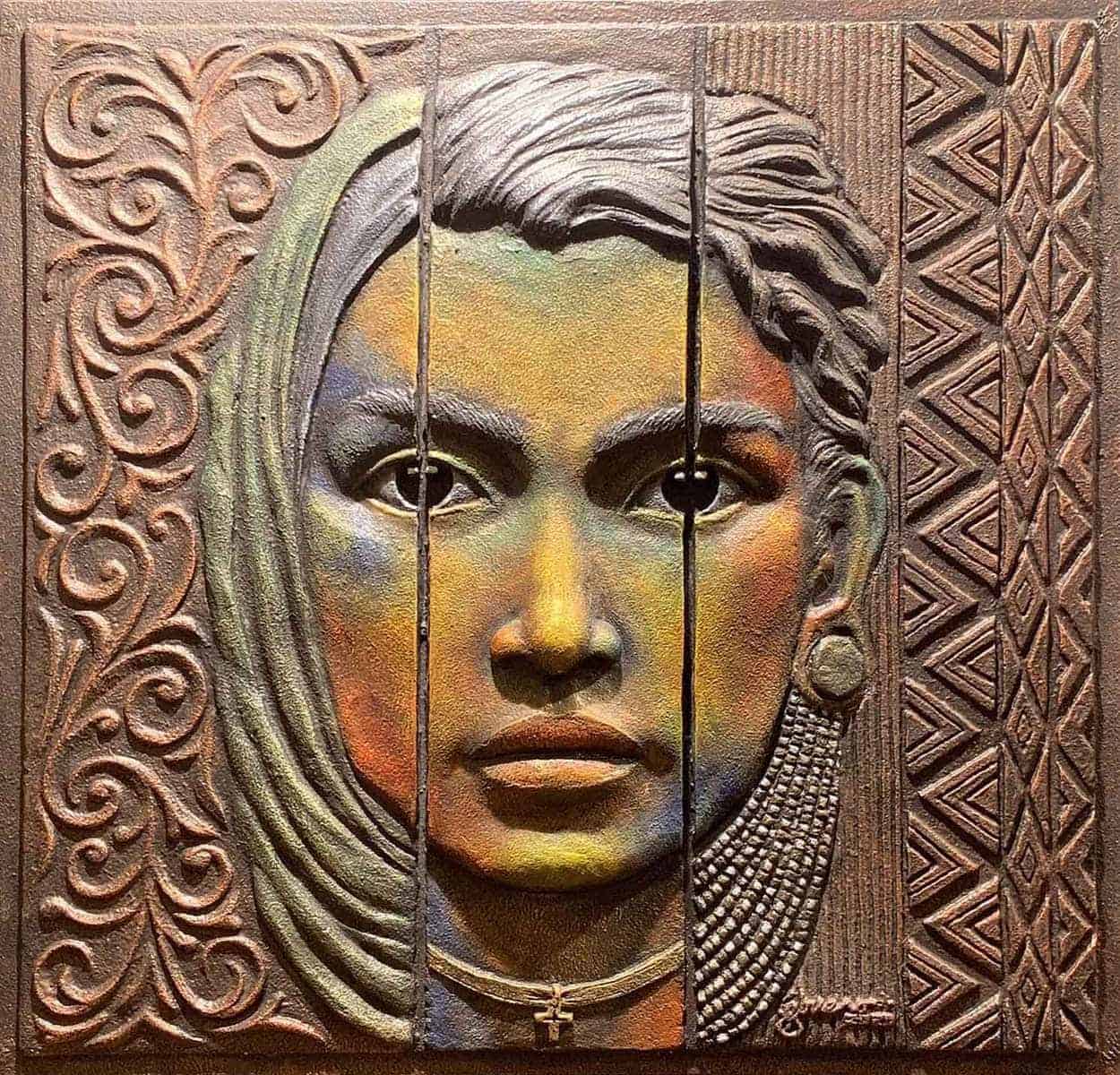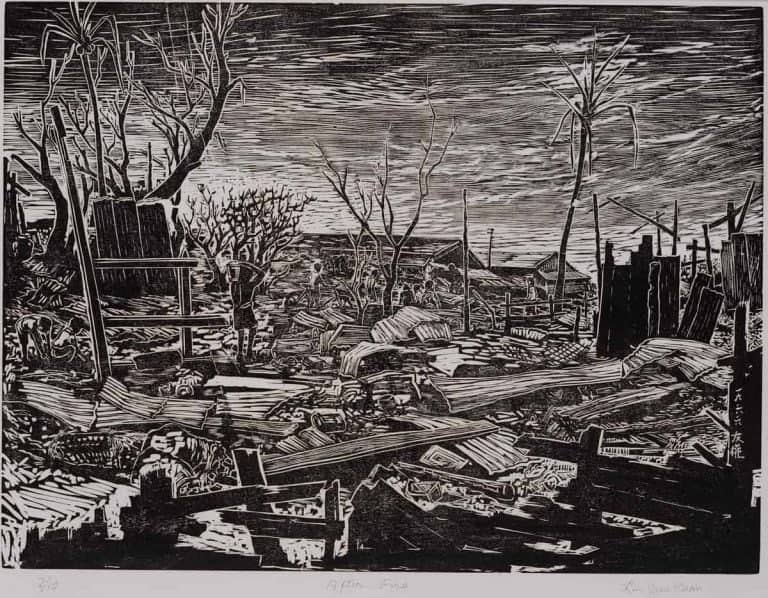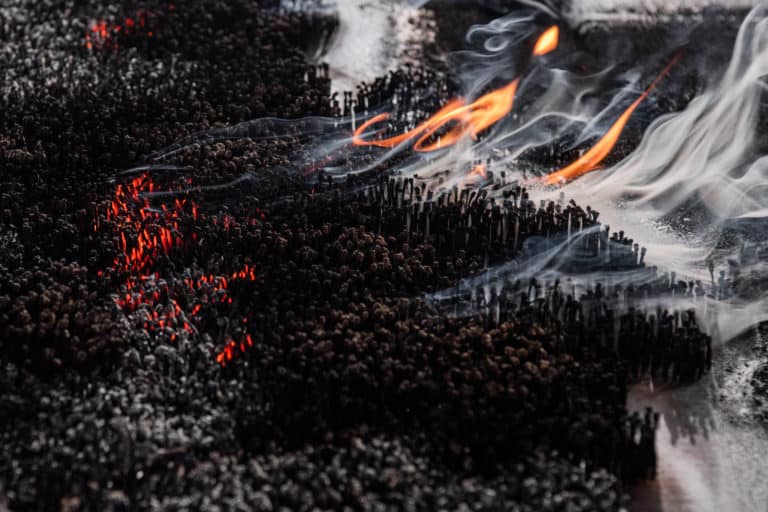At once ornamental and deeply political, Davao artist Jag Bueno’s Hybrid (2020) is perhaps the most iconic and the most thematically layered of artworks to come out of the Southern Philippine territory of Mindanao in decades.
Since its debut in ‘Kulit Kultura’, a sculpture exhibition held in Davao City’s The BauHaus Gallery last September, this work has appeared prominently in the local newspapers and feature videos, and become one of the most visible artworks to come out from Mindanao during the pandemic.
It’s not hard to see why: this bas relief painting is both an attractive depiction of Mindanao’s Tri-People paradigm and a succinct rendering of that paradigm’s complex discourse. Bueno, who is known for his bronze-like relief paintings reminiscent of Mindanawon traditional brasswork, often uses his art to depict social and cultural realities in Mindanao.
For the unacquainted: the Tri-People paradigm has been the subject of Mindanao’ s art for almost a century, its depiction now a staple portrayal of the island’s rich cultural diversity. This depiction usually comes in the form of triptychs, with each of the three peoples – the indigenous Lumad, the Islamized Moro, and the colonial Settler – represented in a panel.
Hybrid follows this trend, incorporating motifs that make each of the three peoples easily identifiable. The Moro is to the split portrait’s left, identifiable by the Hijab and the arabesque patterns called Okir, which are traditional to the Meranaw people (one of the Moro ethnic groups). To the right, the Lumad is established through the traditional beaded necklace called the Bali-og and the large ear piercing – both accessories being mainstays of several Lumad tribes – and the background of geometric patterns reminiscent of Lumad textiles. The Christianised Settler at center is represented by the choker with a cross pendant.
While most Tri-People triptychs portray the three people as separate entities, Jag Bueno’s Hybrid shows the three cultural identities as part of a single face. One might read the work as a commentary on hybridisation, or the mixing of heritage amongst the Mindanao people, which is a key socio-cultural issue that Mindanao struggles with to this day.
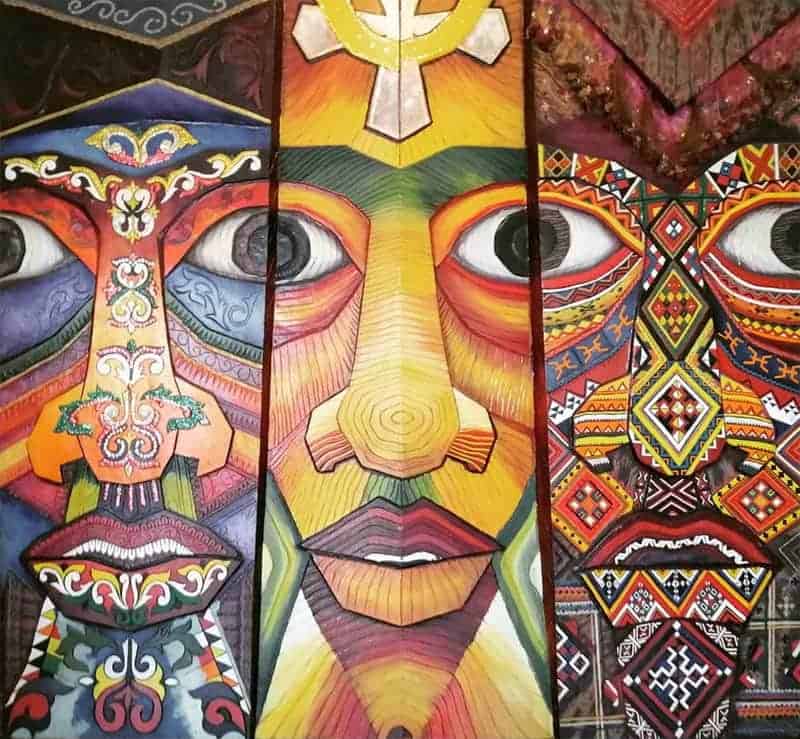
Let’s take a closer look.
Tri-People triptychs almost always depict the colonial Christian Settler at its centre, and Bueno’s is no different. It is perhaps a subconscious mirroring of Philippine socio-cultural reality: the Manila capital imposes a homogenous Christianised Filipino identity upon the rest of the archipelago, a colonial inheritance that indigenous groups in Mindanao reject. Against this backdrop, it is the colonial Settler that possesses the most power, with Settlers often dominating political and cultural discourse. They also compose the bulk of Mindanao’s population, a result of the colonial Manila government deliberately encouraging resettlement to dilute indigenous populations in Mindanao.
Because the Settler is positioned in the centre, only she has the mouth, but she has no ears. It is the Settler who always speaks for Mindanao. This dynamic is referred to as Settlerjacking – the Settler hijacking the voice of the Lumad and Moro in conversations about them. But the Settler never listens, often ignorant to the realities of the Lumad and Moro whose voice she is hijacking.
And yet by sandwiching the Settler at the piece’s center, Bueno also captures the cultural void that the Settler suffers from. The only motif adorning the Settler is the choker with a cross pendant: in Mindanao, Settlers stand out in binary opposition to the Lumad and Moro for being Christians and living a Christianised lifestyle.
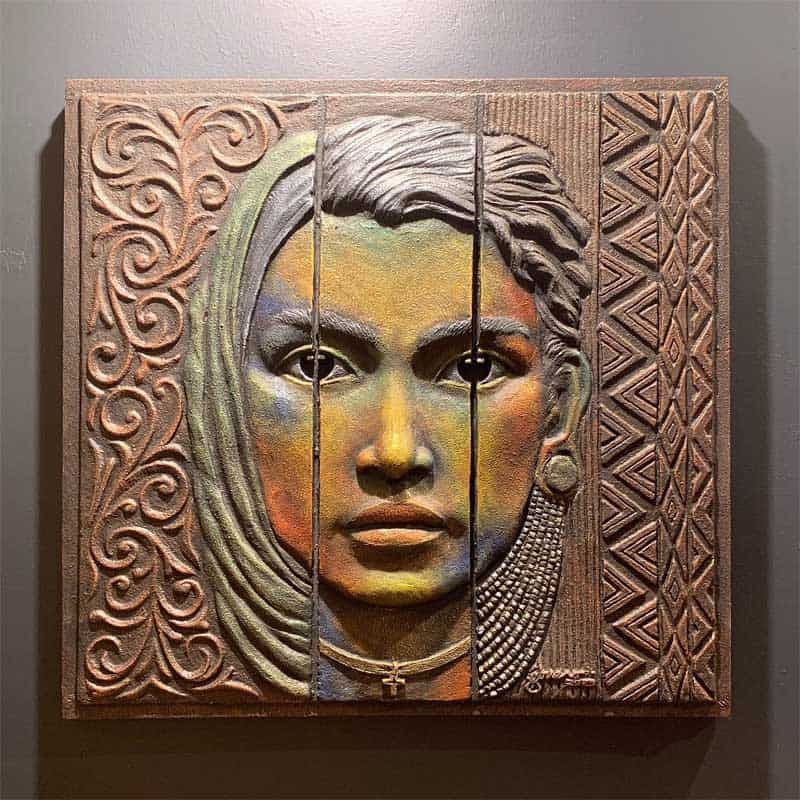
Other than the cross, there is nothing to define the Settler on Hybrid. In contrast, the Lumad and the Moro are richly adorned with their indigenous motifs in the backdrop. While they retain much of their rich precolonial traditions, the Settler is reduced by coloniality to a crude simplicity. Hybrid literally demonstrates how there is no space for the Settler to flourish.
The Mindanawon woman of Hybrid stares enigmatically, the contours of her lips changing attitude in tempered lustre as the bas relief is viewed from different perspectives. From some angles, she exudes a stern resolution; from others, a tired impatience.
But viewed slightly from below, she hints at an almost lachrymose helplessness, her eyes split in hybridity, her cheeks cut by groves trickling down as the tears which divide her peoples.
______________________________
Hybrid by Jag Bueno is currently in a private collection, but has been loaned to the BauHaus Gallery in Davao for free public viewing on a by-appointment basis.
Feature image courtesy of Image courtesy of The Middle Magazine.
